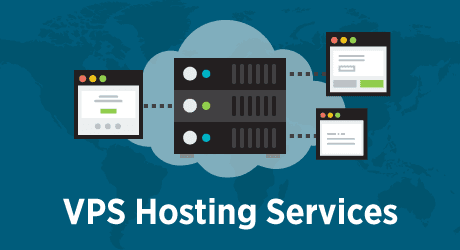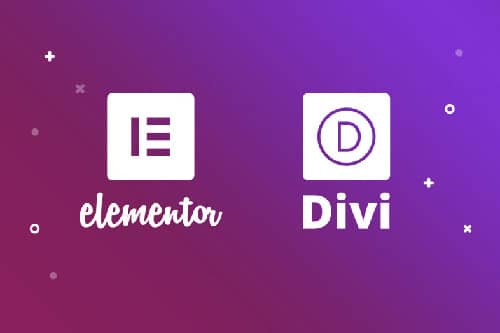What is a CDN? How It Works and Why Your Website Needs One
Ever clicked away from a website that took more than a few seconds to load? Of course, you have. Now, the scary part: your potential customers are doing the exact same thing to you. Every extra second your site takes to load is costing you traffic, conversions, and credibility. In today's fast-paced digital world, site speed isn't just a feature; it's the foundation of a successful online presence.
This is where a Content Delivery Network, or CDN, comes in. It might sound like a complex piece of tech reserved for giants like Amazon or Netflix, but it's actually one of the most accessible and impactful tools you can use to supercharge your website. We're here to demystify what a CDN is, how it works its magic, and why it's an absolute must-have for any serious website owner, developer, or small business in 2024.
The Core Problem: Why Geography is Your Website's Enemy
Imagine your website is a boutique shop located in New York City. Your web hosting server is that physical shop. If a customer from Manhattan wants to visit, the trip is quick and easy. But what if a customer from Tokyo wants to browse your products? They have to travel all the way across the world. In the digital world, this 'travel time' is called latency.
Every piece of your website—images, text, code (CSS, JavaScript)—has to make this journey from your server to your visitor's browser. The greater the physical distance, the longer the journey, and the slower your website loads. This delay can be the difference between a new customer and a bounced visitor.
What is a CDN, Exactly? The Magic of Global Distribution
A Content Delivery Network (CDN) is a globally distributed network of proxy servers that work together to provide faster content delivery. Think of it as creating a global franchise of your New York shop.
Instead of having just one central location, a CDN strategically places copies of your website's static assets (the parts that don't change often, like images, videos, CSS, and JavaScript files) in data centers—called Points of Presence (PoPs) or edge servers—all over the world. When a user from Tokyo visits your site, they don't have to fetch the data from New York. Instead, they are automatically connected to the nearest PoP, perhaps one right in Tokyo, and the content is delivered almost instantly.
How a CDN Works: A Simple Step-by-Step
- A User Makes a Request: Someone in London types your website address into their browser.
- Smart Routing: Instead of going directly to your origin server in New York, the request is intercepted by the CDN and intelligently routed to the closest edge server, in this case, one in London.
- Content Delivery (Cache Hit): The London edge server already has a saved (cached) copy of your website's static content. It delivers these files directly to the user at lightning speed. This is called a 'cache hit'.
- The First-Time Fetch (Cache Miss): If this is the first time a request has been made from that region, the edge server might not have the content. In this case (a 'cache miss'), the edge server contacts your main origin server in New York, retrieves the files, delivers them to the user, and then saves a copy for all future visitors from that region.
This process dramatically reduces latency, making your website feel snappy and responsive for everyone, no matter where they are.
The Top 5 Benefits of Using a CDN (It's More Than Just Speed)
While the primary benefit is a massive boost in site speed, a CDN offers a suite of advantages that are crucial for modern online businesses.
1. Dramatically Improved Website Performance
A faster website leads to a better user experience, lower bounce rates, longer session durations, and higher conversion rates. For e-commerce sites, a one-second delay can reduce conversions by 7%. Furthermore, Google uses site speed, particularly Core Web Vitals, as a key ranking factor. A faster site can directly lead to better SEO and more organic traffic.
2. Enhanced Security
Modern CDNs are a frontline defense for your website. Many, like the popular Cloudflare, offer:
- DDoS Mitigation: They can absorb and deflect massive Distributed Denial of Service (DDoS) attacks that would otherwise overwhelm your server and take your site offline.
- Web Application Firewall (WAF): A WAF can block malicious traffic, SQL injections, and cross-site scripting before they ever reach your server.
- Free SSL/TLS Certificates: They make it easy to encrypt your website's traffic (HTTPS), which is essential for security and SEO.
3. Increased Reliability and Uptime
Because a CDN distributes your traffic load across multiple servers, it prevents your origin server from being overwhelmed during traffic spikes (like after a successful marketing campaign or going viral). Some CDNs can even serve a cached version of your site if your origin server temporarily goes down, keeping your business online and preventing lost revenue.
4. Reduced Bandwidth Costs
Your hosting plan comes with a certain amount of bandwidth. By offloading a significant portion of your traffic (especially heavy files like images and videos) to the CDN, you drastically reduce the bandwidth consumed from your host. For many, this can lead to significant savings on hosting bills, making even affordable hosting plans more powerful.
5. Better Global Reach
If you have or aspire to have an international audience, a CDN is non-negotiable. It ensures that a user in Sydney has the same great experience as a user in Chicago, leveling the playing field and opening your business to the world.
Finding the Right CDN: Integrated Hosting vs. Standalone Solutions
The great news is that implementing a CDN is easier and more affordable than ever. Many of the best hosting for small business providers now include it for free.
Strategy 1: Integrated CDNs (The Easy, One-Click Solution)
For most website owners, this is the best path. Choose a host that has a CDN built-in or offers a seamless, one-click integration. This provides all the core benefits without any technical hassle.
- Hostinger: A leader in the affordable hosting space, Hostinger often includes its own in-house CDN or a simple Cloudflare integration with its plans. It's an excellent choice for those on a budget who still demand great performance.
- SiteGround: Known for its premium performance and top-tier support, SiteGround has developed its own powerful, free CDN that is deeply integrated into its platform. It's a fantastic option for businesses that prioritize speed and reliability above all else.
- Bluehost: A popular choice for WordPress beginners, Bluehost provides a free Cloudflare CDN that can be activated with a single click from the dashboard. It's a solid example of fast website hosting made simple for new users.
Strategy 2: Standalone CDNs (For More Power and Control)
If your host doesn't offer a CDN or you need more advanced features, you can sign up for a standalone service and point it to your website.
- Cloudflare: The undisputed market leader. Cloudflare's free plan is incredibly generous, offering robust security, DDoS protection, and a massive global network. It's the service that most hosting companies integrate anyway, and setting it up manually is a straightforward process of changing your domain's nameservers.
- Bunny.net: A fantastic pay-as-you-go alternative. Bunny.net is known for its blazing-fast performance and transparent, affordable pricing. It's a favorite among developers and performance enthusiasts who want more granular control than Cloudflare's free plan offers.
Conclusion: Your Next Step Towards a Faster Website
A Content Delivery Network is no longer a luxury; it's a fundamental component of a modern, high-performance website. It directly impacts your user experience, security, reliability, and ultimately, your bottom line. By closing the physical gap between your content and your audience, you create a faster, safer, and more dependable online presence.
Whether you choose a host with a built-in solution or opt for a standalone service like Cloudflare, implementing a CDN is one of the highest-impact upgrades you can make to your website today.
What's your experience with CDNs? Check your website's speed using a tool like GTmetrix or PageSpeed Insights before and after enabling a CDN, and share your results in the comments below! We'd love to hear how much it improved your website performance.
Read more:















